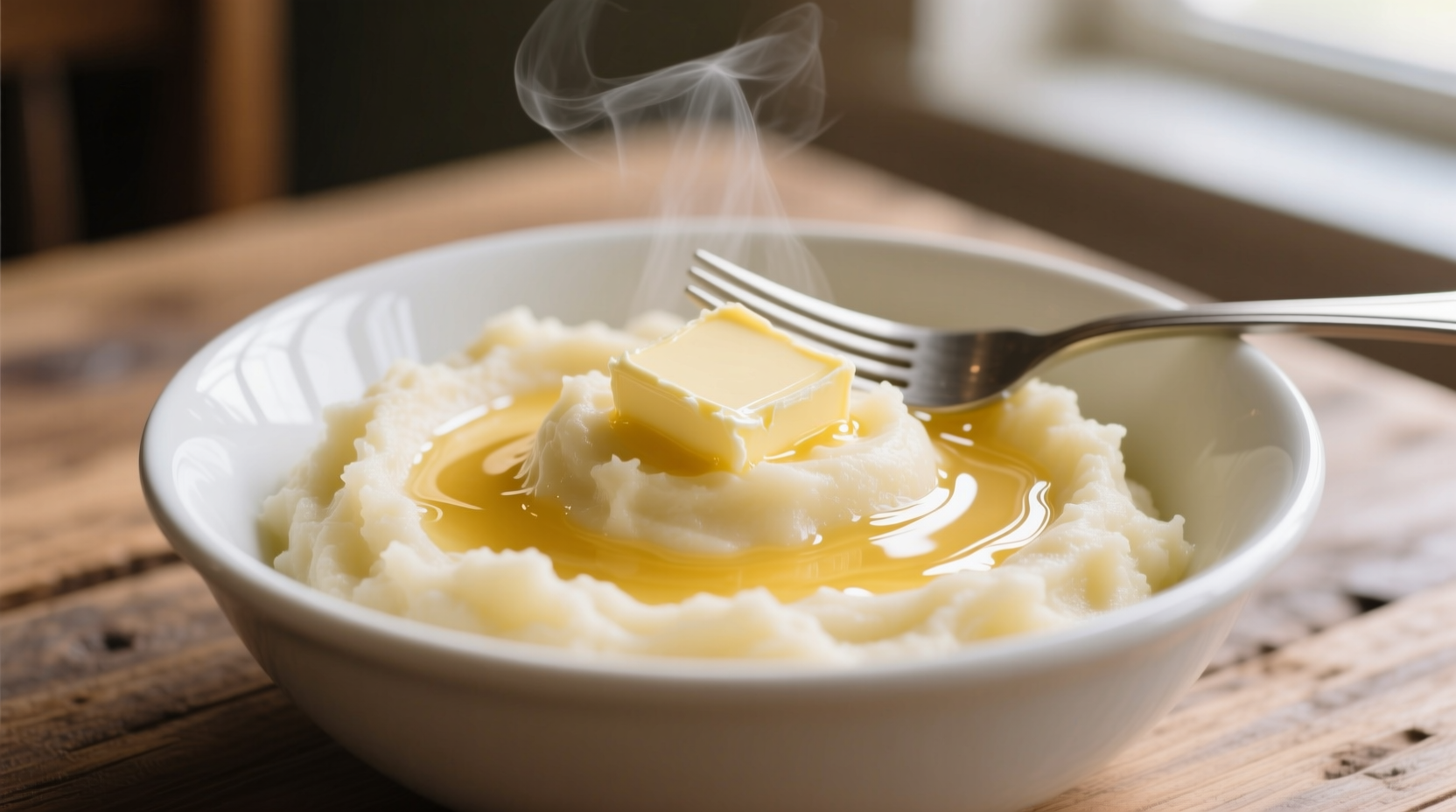Perfect Simple Mashed Potatoes: Creamy Comfort in 20 Minutes
Nothing beats the comfort of perfectly creamy mashed potatoes made with pantry staples. This straightforward method delivers restaurant-quality results using basic kitchen tools and just four ingredients. Forget fancy gadgets or hard-to-find components—our tested technique ensures smooth, flavorful mashed potatoes every time, whether you're cooking for a weeknight dinner or holiday feast. The secret lies in proper potato selection, precise cooking temperature, and the right mashing approach that prevents gluey texture.

Why This Simple Method Works Every Time
Professional chefs rely on specific techniques to achieve perfect mashed potatoes without special equipment. The key scientific principle is starch management: boiling potatoes too vigorously breaks down cell walls excessively, releasing too much starch and creating a gummy texture. Starting potatoes in cold water and maintaining a gentle simmer preserves their structure while ensuring even cooking. According to the USDA's Food Safety and Inspection Service, proper cooking temperature (185-210°F internal temperature) ensures starch granules absorb just enough moisture to create that ideal creamy-yet-firm texture.
What You'll Need: The Bare Essentials
This minimalist approach uses only what you likely already have in your kitchen:
- 2 pounds russet potatoes (about 4 medium), peeled and cut into uniform 1.5-inch chunks
- 4 tablespoons unsalted butter, cut into small pieces
- 1/2 cup whole milk, warmed
- 1 teaspoon salt, plus more to taste
Step-by-Step: Making Perfect Simple Mashed Potatoes
- Place potato chunks in a large pot and cover with cold water by 1 inch. Add 1 teaspoon salt.
- Bring to a gentle boil over medium-high heat, then reduce to a simmer. Cook 15-20 minutes until fork-tender.
- Drain potatoes thoroughly in a colander for 2 minutes to remove excess moisture.
- Return potatoes to the warm pot (off heat) and let sit 1 minute to evaporate additional moisture.
- Add butter and mash with a potato masher until mostly smooth.
- Gently stir in warmed milk until incorporated. Season to taste.
| Potato Type | Starch Content | Best For Mashing? | Texture Result |
|---|---|---|---|
| Russet (Idaho) | High | Excellent | Creamy, fluffy |
| Yukon Gold | Medium | Very Good | Buttery, slightly dense |
| Red Potatoes | Low | Poor | Waxy, grainy |
| Sweet Potatoes | Medium | Specialty | Dense, moist |
Common Mistakes That Ruin Simple Mashed Potatoes
Avoid these frequent errors that turn your creamy dream into a kitchen nightmare:
- Using cold dairy - Cold milk or butter makes potatoes gluey as the starches seize up
- Over-mixing - Using electric mixers releases too much starch, creating paste-like texture
- Skipping the draining time - Excess water dilutes flavor and creates soupy potatoes
- Adding all liquid at once - Gradual addition prevents oversaturation
When to Keep It Simple (And When to Elevate)
This basic method shines for everyday meals and when cooking for picky eaters who prefer traditional flavors. According to culinary research from the Culinary Institute of America, the simple approach works best when potatoes are the star of the dish rather than a supporting element. For holiday feasts or special occasions, consider adding roasted garlic or fresh herbs, but avoid complicating the recipe when serving alongside strongly flavored main courses like roast beef or turkey. The beauty of this technique is its adaptability—it provides the perfect canvas for customization while delivering reliable results with minimal effort.
3 Easy Variations to Try
- Garlic Lover's - Simmer 3 peeled garlic cloves with potatoes, then mash together
- Herb Infused - Steep 2 sprigs fresh thyme in warm milk for 10 minutes before adding
- Extra Creamy - Substitute 1/4 cup of milk with sour cream for richer texture
Storing and Reheating Your Mashed Potatoes
Store leftovers in an airtight container in the refrigerator for up to 3 days. When reheating, add 1-2 tablespoons of milk per cup of potatoes to restore moisture. The National Center for Home Food Preservation recommends reheating mashed potatoes to an internal temperature of 165°F for food safety. For best results, reheat gently in a saucepan over low heat while stirring frequently—microwaving can create uneven hot spots and cause separation.
Frequently Asked Questions
Can I make simple mashed potatoes without dairy?
Absolutely. Substitute the milk with unsweetened almond milk or vegetable broth, and use olive oil instead of butter for a dairy-free version that maintains creaminess.
Why are my mashed potatoes gluey?
Gluey texture typically results from over-mixing or using a food processor. Stick to a potato masher and stop when just combined—the potatoes should still have some texture.
How can I prevent lumps without special equipment?
Cut potatoes into uniform pieces before boiling, ensure they're fully tender before mashing, and warm your dairy ingredients to prevent the potatoes from seizing up during mixing.
Can I prepare mashed potatoes ahead of time?
Yes, but with modifications. Prepare through the mashing step, then stir in extra butter (2 tablespoons) before refrigerating. When reheating, add additional warmed milk to restore texture.











 浙公网安备
33010002000092号
浙公网安备
33010002000092号 浙B2-20120091-4
浙B2-20120091-4